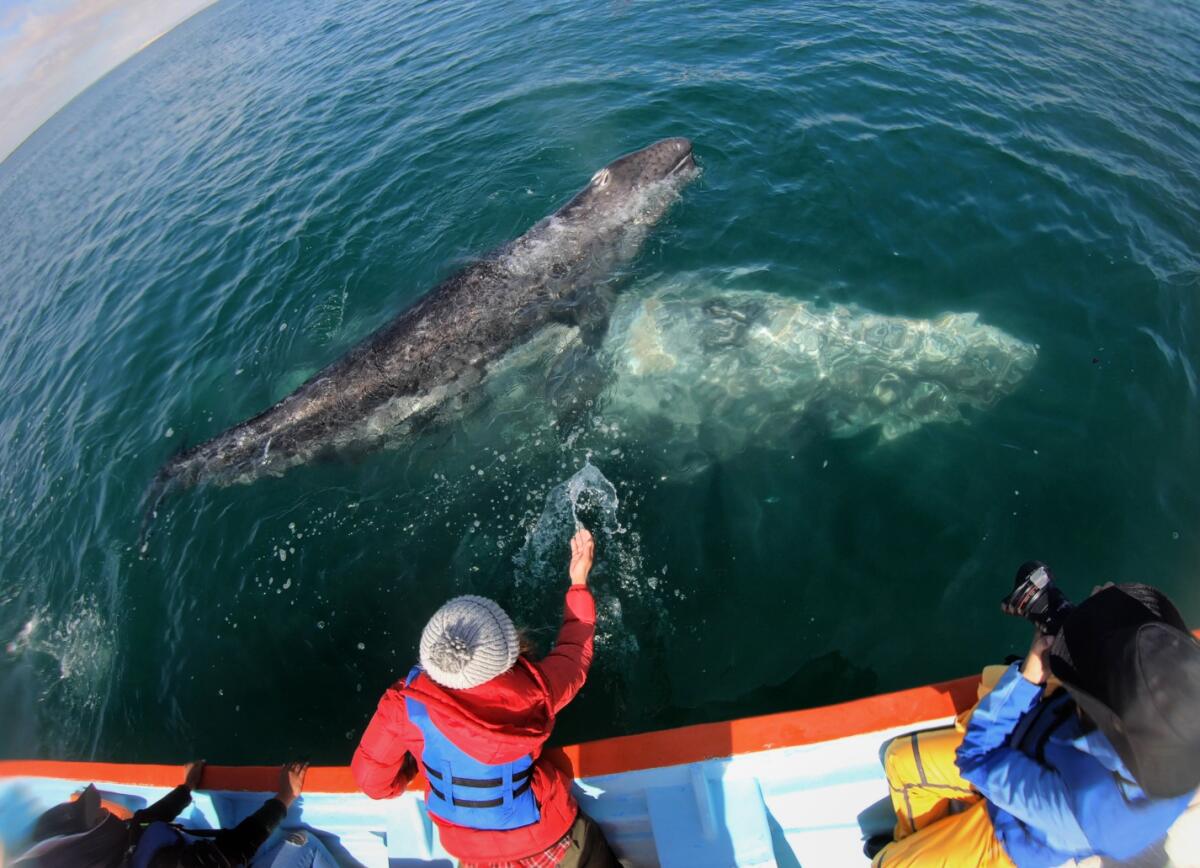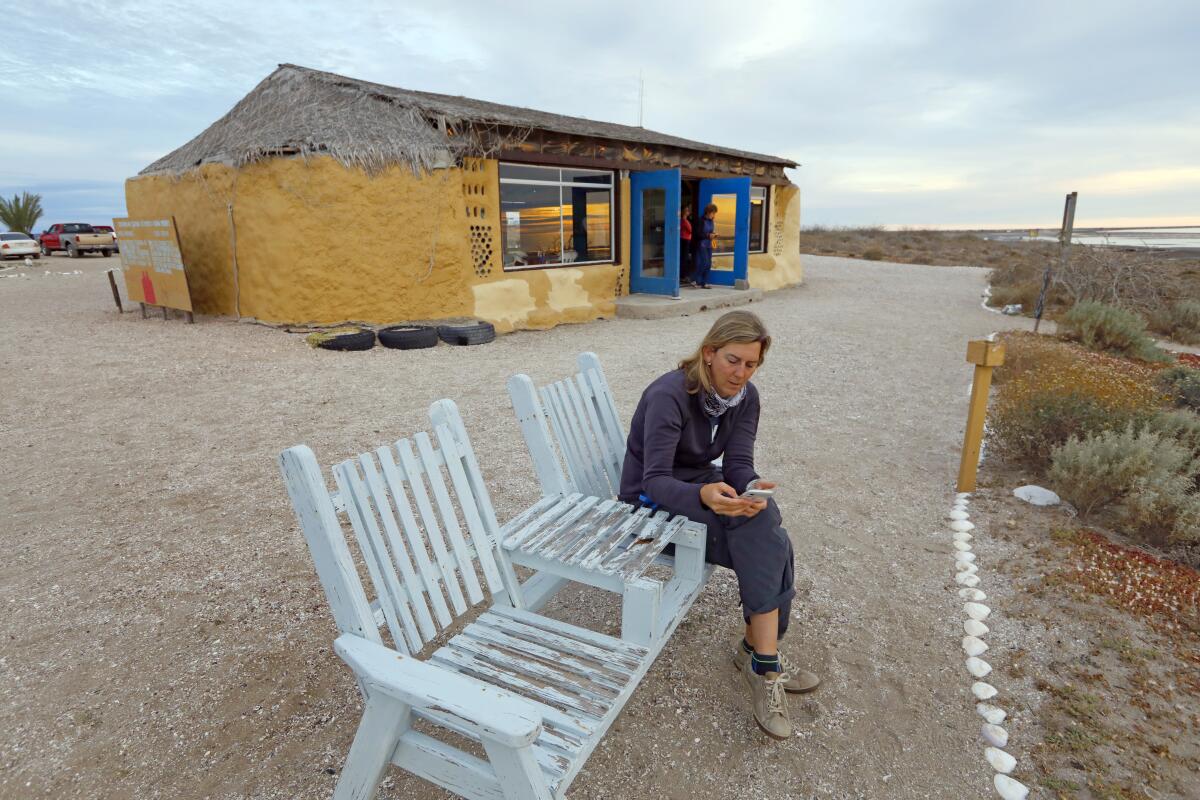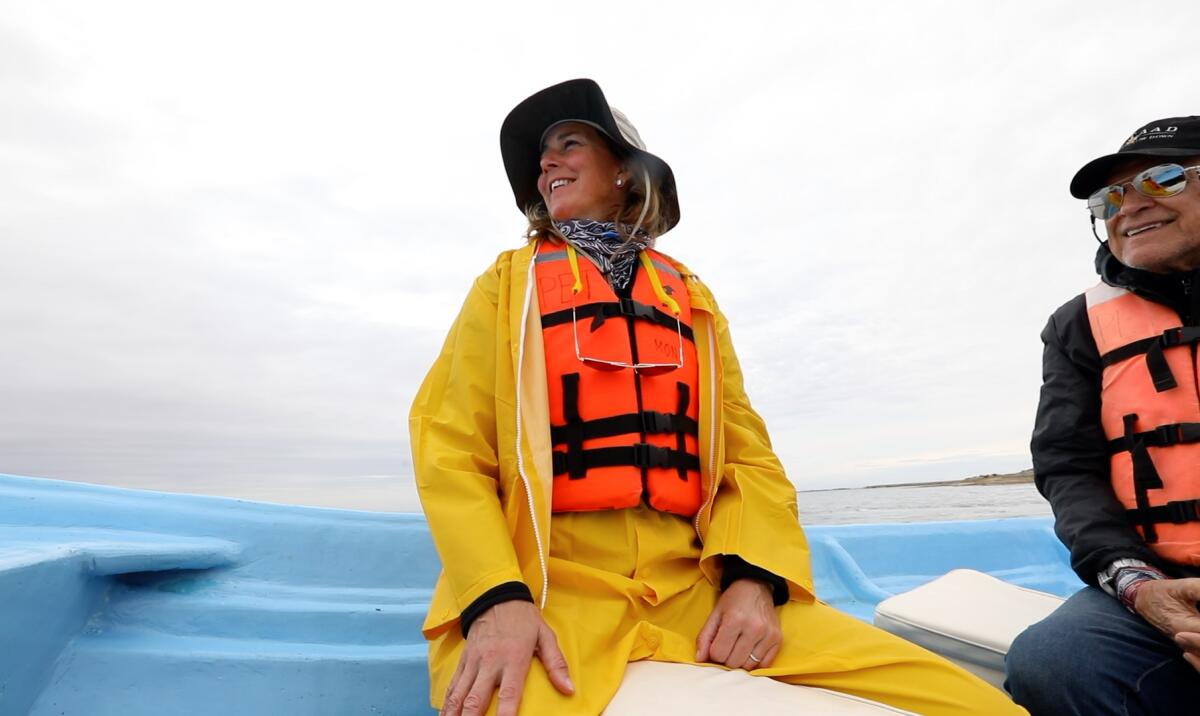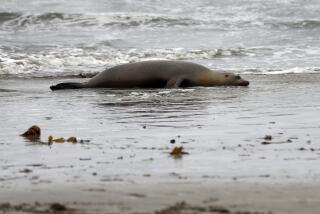How we delved into the odyssey of whale deaths, even as a pandemic raged

- Share via
MENLO PARK — In 2019, gray whales inexplicably began to die by the scores along the Pacific coast.
By the end of the year, whale watchers and government scientists were stunned that hundreds were perishing, still with no clear cause. In San Francisco Bay, where I live, 34 had died. That was when Carolyn Cole and I set out to find answers.
Originally, we had a plan to follow the whales on their yearly migration, starting in Mexico’s Baja California Peninsula, where these whales appear every spring to bask and reproduce in warm, protected inlets. Then we would work our way north up the coast.
But after we landed in Loreto, Mexico, on March 5, 2020, nearly everything was upended.
The coronavirus was rampaging worldwide. Cruise ships were the most visible spreaders.
Carolyn and I aborted our plans to drive west, across the Baja Peninsula to see the whales — and instead drove more than 300 miles south to interview passengers disembarking from cruise ships pulling into Cabo San Lucas. No one was wearing masks. Many seemed surprised and incredulous. And after a couple of days, we decided to head back north to the leviathan nursery.
The whales were present, the tourists abundant. In San Ignacio, all of the cabanas at Pachico’s Ecotours were full with visitors from around the world — including a couple that happened to live on the same street as me, in Menlo Park.

One day, we headed out to see the whales with a group of tourists from Milan, Italy, the European hot spot of the emerging virus. Gloved and masked, Carolyn and I did our best to record the trip. She brought her usual two bags of camera equipment and plunged a GoPro attached to a selfie stick underwater to capture video of the whales, while simultaneously taking images of their surfacing bodies and our fellow passengers. I did my best to lend a hand (unhelpfully pressing “stop” instead of “play” on an audio recorder, and pressing “pause” on the GoPro).
We got good video and flew home in the nick of time — three days before shutdown orders grounded Californians in their homes.
Within days it became clear our plans to physically follow the whale migration would — like a GoPro in my incapable hands — be paused. Canada had closed its borders. California and much of the U.S. had enacted shelter-in-place orders. Researchers up and down the coast faced scientific lockdown.
Searching for new avenues to explore the whales’ saga, we turned to social media and began following avid amateur whale watchers — folks who were doing what they could to monitor the whales.
It’s how we found Scott and Tree Mercer — so determined to observe and record the whales’ journey past their home in Point Arena, Calif., that they defied sheriff’s orders and were ejected, more than once, from their perch near the lighthouse.
It’s how we got word of new strandings — from Southern California to Del Norte County — and built a network of sources, including experts such as Sarah Grimes at Ft. Bragg’s Noyo Center for Marine Science, Bill Keener at the Marine Mammal Rescue Center in Sausalito and Alisa Schulman-Janiger in Dana Point.
As a crazy year got ever crazier, we took to the road to cover the pandemic, wildfires and protests over George Floyd’s murder across much of California and other states, but we kept tabs on the whales as we moved.
Carolyn took trips to Oregon and Washington to capture the migration — unfortunately facing bad weather and photo-reluctant whales at every turn.
And as the year came to a close, and coronavirus restrictions began to loosen, we decided to revisit the whales in Baja — and booked our travel for February, trying to schedule it for the same time we visited the year previously.
Unfortunately, the place we stayed before, Pachico’s Ecotours, was closed.

So, we booked at Antonio’s Ecotours — just down the road — where getting a reservation was only too easy. The only other visitors at the resort were a French film crew; they left the day we arrived.
It was a stark difference from early 2020, when the resorts were booked to capacity and the communal eating areas packed every night.
Even more concerning was the state of the whales. Like the previous two years, many of the whales were still skinny. And in the Baja lagoons, there were fewer mothers and calves than typically seen.
But there were some healthy ones too. Possibly they had a reprieve from stress due to a decrease in boat traffic and noise pollution.
Now, as we seem to have turned a very tenuous corner with the virus, we’re hoping to visit with the whales later this summer in Alaska — where they journey every year to consume their yearly food supply.
Carolyn and I hope that 2020 — a year of stops, starts and prolonged quiet and reflection — will give us all more perspective on this fragile planet. One in which we as humans can move somewhat freely again, but with more awareness of our impact on these creatures and ecosystems we all share.
Gray whales have one of the longest migrations of any mammal and have proved themselves adaptable. But can they adjust to rapidly changing oceans?









